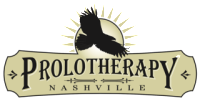Injury scenarios…sports, work, recreation, wear and tear, accidents, and any other situation where abnormal forces are applied to the body and pain results. Virtually all of these situations involve symptomatic, and healable, connective tissue damage, which can include damage to menicsus, labrum, tendons (like the rotator cuff tendons and may others), ligaments (like the ACL, sacroiliac, and many others), fascia and periosteum (like ‘shin splints’). Almost any ongoing muscle malfunction more than six weeks after an initial injury, though felt ‘in the muscle’, and usually associated with tightness of the muscle or spasm, is actually due to nearby tendon or ligament damage. Many sports injuries for which arthroscopic surgery, elbow surgery, and ankle surgery is recommended can be successfully treated without surgery.
Many painful conditions of the spine for which fusion is recommended. (read Dr. Johnson’s personal story)
Skeletal abnormalities that put additional ‘stress’ on certain Connective Tissue structures (scoliosis, hip socket malformations, etc.) produce symptoms that are almost always arising from connective tissue structures which do not ‘show up’ on imaging. This cause of pain is commonly overlooked during ‘standard’ evaluations.
‘Degenerative’ conditions involving discs, cartilage, and bony structures almost always involve ligament damage and ‘looseness’ as the cause of damage/ ‘degeneration’ of the structures. This ligament damage is generally the cause of ALL of the symptoms that are usually ‘diagnosed’ as being due to the ‘degeneration’. This includes the condition that is generally called ‘osteo-arthritis’, and includes situations termed ‘bone on bone’ based on imaging studies. In almost all of these situations, the connective tissue structures are where the pain is actually coming from, and healing this damage results in excellent long term results.
Any condition with an ‘itis’ as the last four letters. Tendonitis, bursitis, costo-chondritis, epicondylitis, osteo-arthritis, plantar fasciitis, tenosynovitis. Almost any condition which for which people experience transient symptom relief with an anti-inflammatory medication or corticosteroid can be resolved long-term by Prolotherapy treatment. Virtually any condition associated with ongoing or intermittent muscle malfunction—spasm, ‘trigger points’, and tightness, or weakness, loss of range of motion and pain with activity—is being caused by small-fiber, stretch-induced nerve damage in one or more connective tissue structures. If you cannot ‘stay in adjustment’ following Chiropractic care, this is in all likelihood due to healable connective tissue damage. Virtually any painful condition which would be treated with epidural steroid administration, radio-frequency nerve ablation, or physical therapy is also treatable with Prolotherapy with a very high, long-term success rate.
‘Undiagnosed chronic pain’ is often actually caused by the connective tissue damage mechanism described above (read about Connective Tissue Damage and Pain). It is easy, and inexpensive, to determine whether or not unhealed connective tissue damage is playing a role in a patient’s symptoms.
Post-operative pain is commonly arising from connective tissue, and this phenomenon is not usually diagnosed by surgeons or other practitioners. This pain is commonly ‘diagnosed’ as due to ‘scar tissue’, ‘a nerve pinch at another level’, ‘another disc that is symptomatic’, etc. It is certainly worth ruling out unhealed connective tissue damage as the cause of such pain before proceeding with ANY other intervention.
Almost all work-related and trauma-related pain in necks, backs, and joints is caused by healable connective tissue damage.
Almost all ‘postpartum’ back pain and coccyx pain, and pelvic floor dysfunction and pain are arising from connective tissue structures which respond to Prolotherapy with a high success rate.
Many headaches, migraine and other types, can be improved or cured by Prolotherapy, particularly when there is a history of neck trauma or ongoing neck symptoms.
This list is only partial, but will give you some idea of the many ‘faces’ of unhealed connective tissue damage, and the versatility of this treatment in addressing the many possible presentations of this pathology.

Leave A Comment